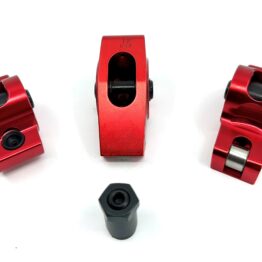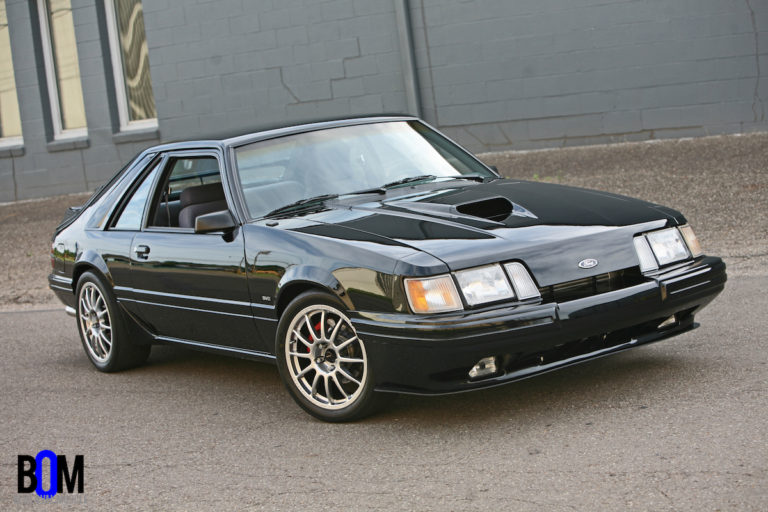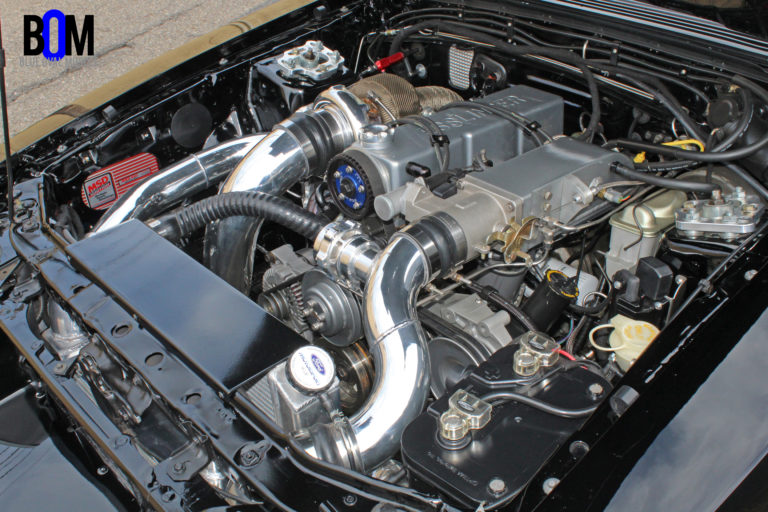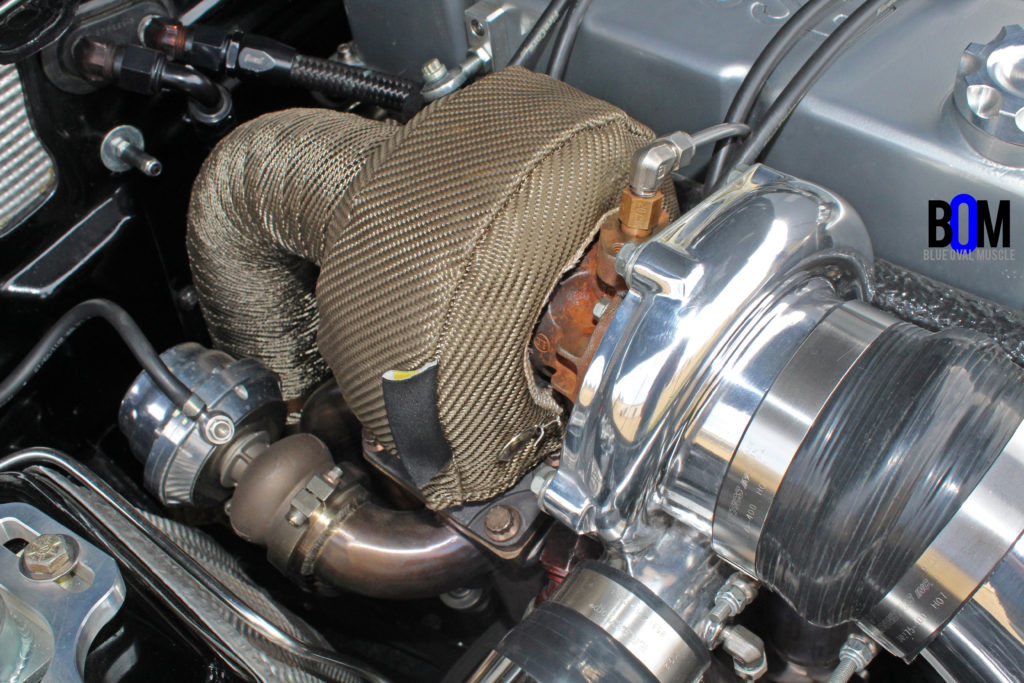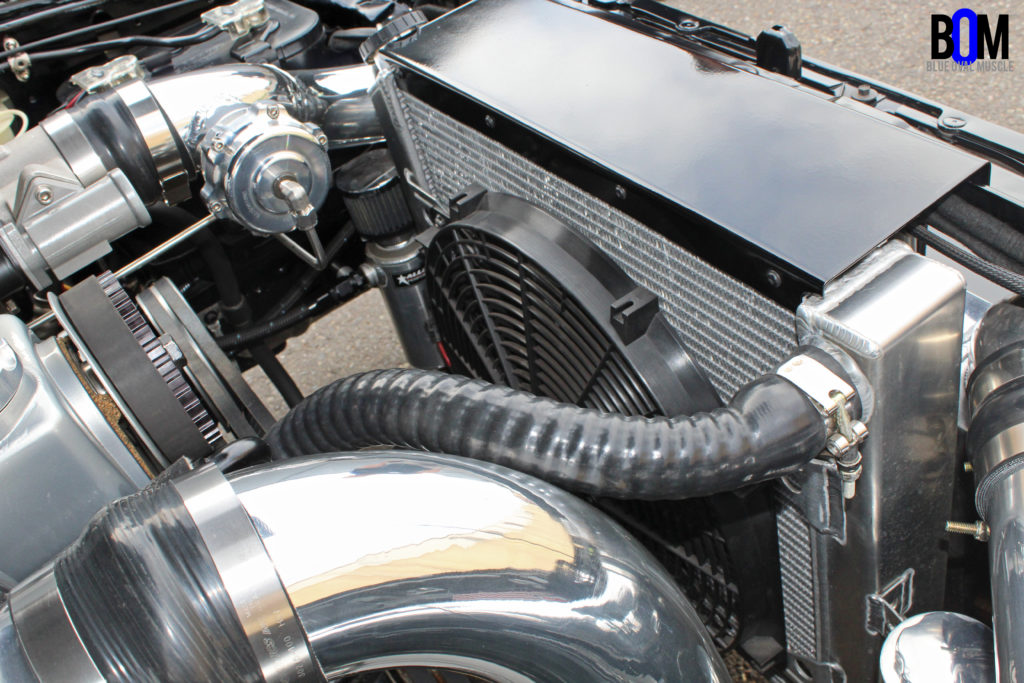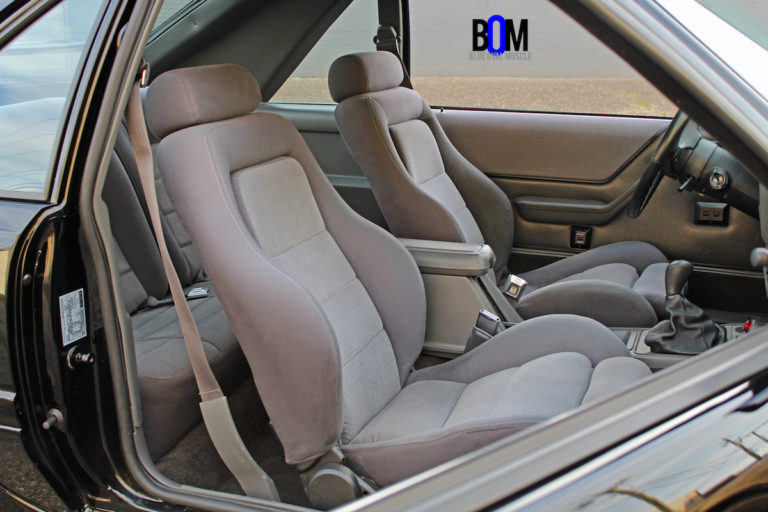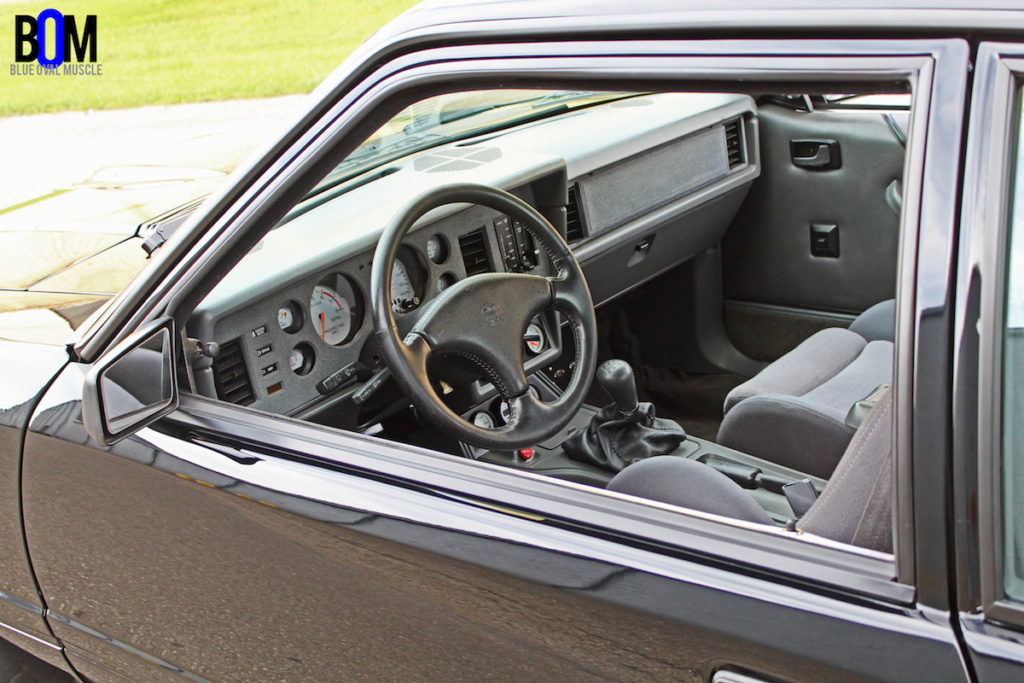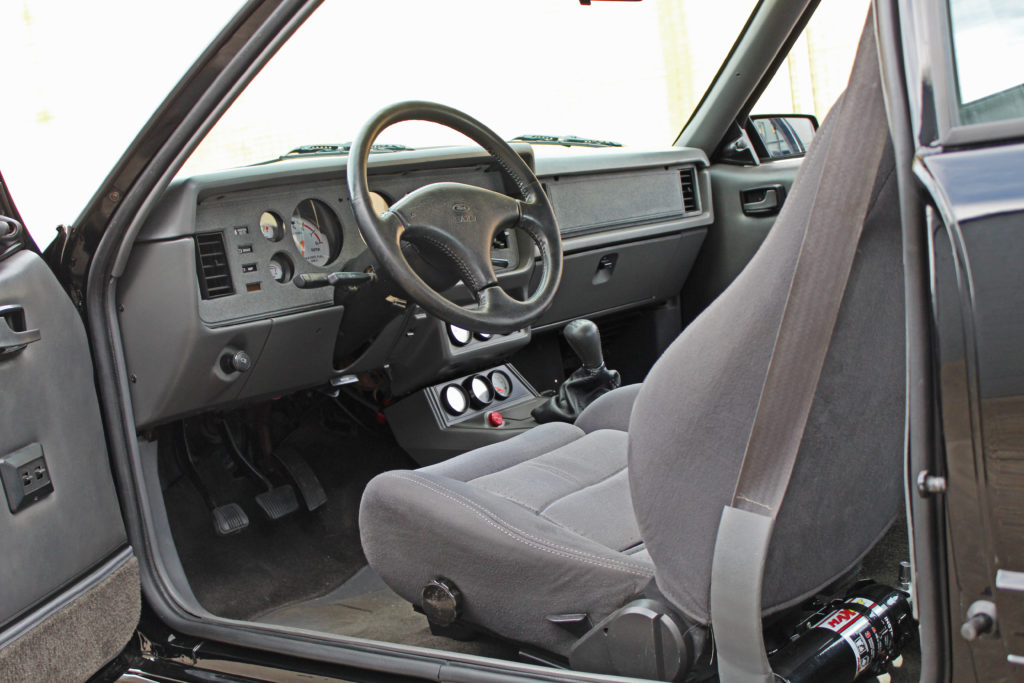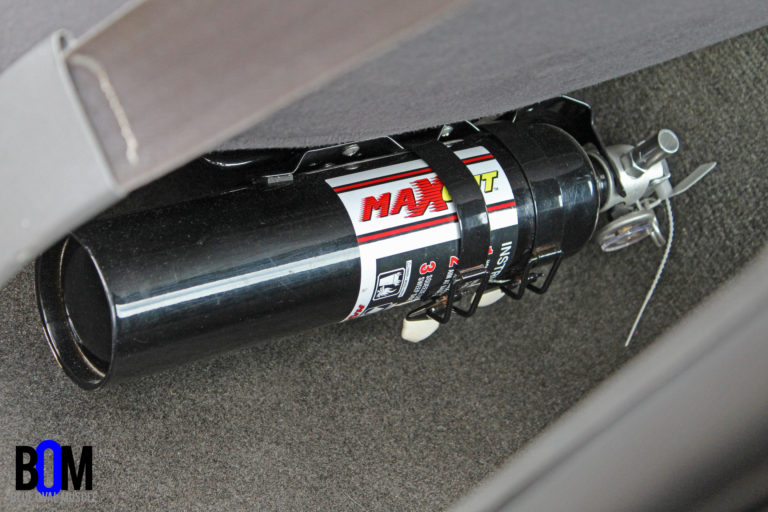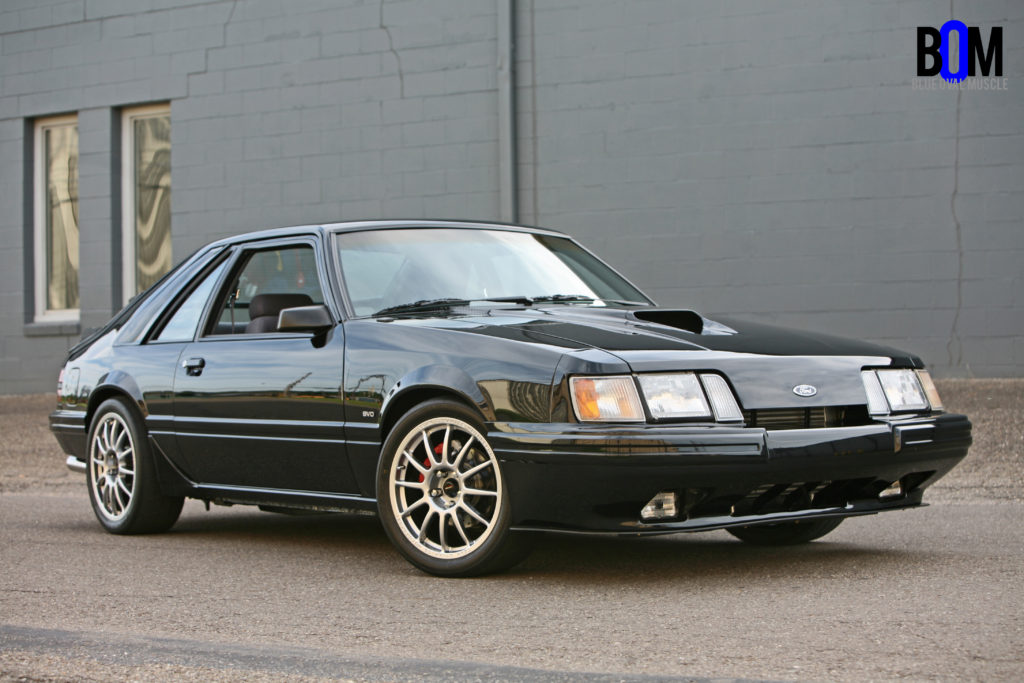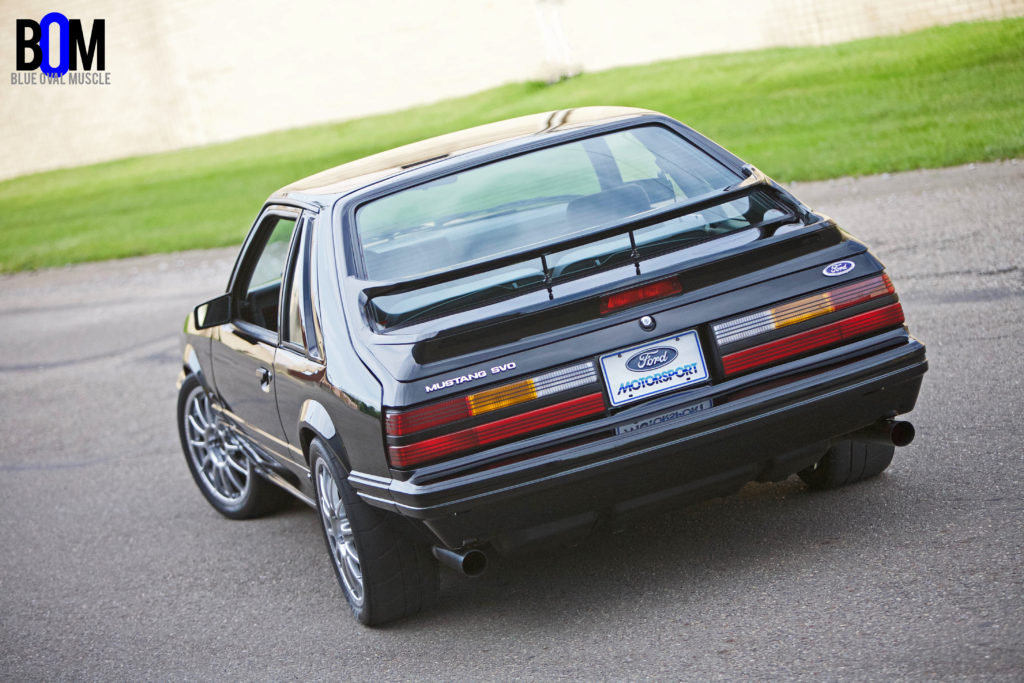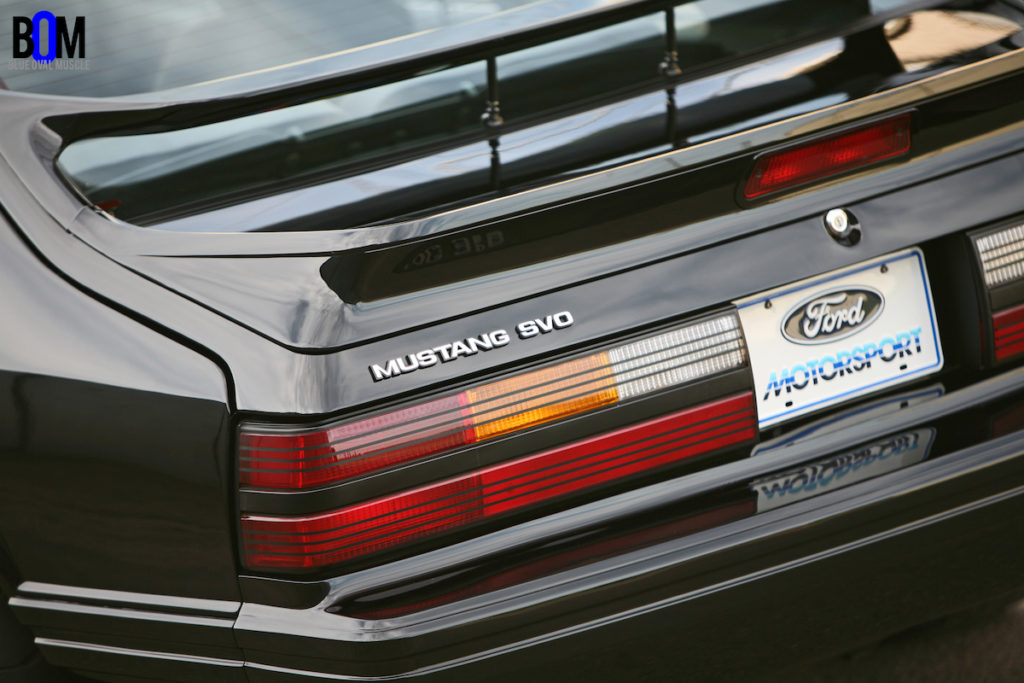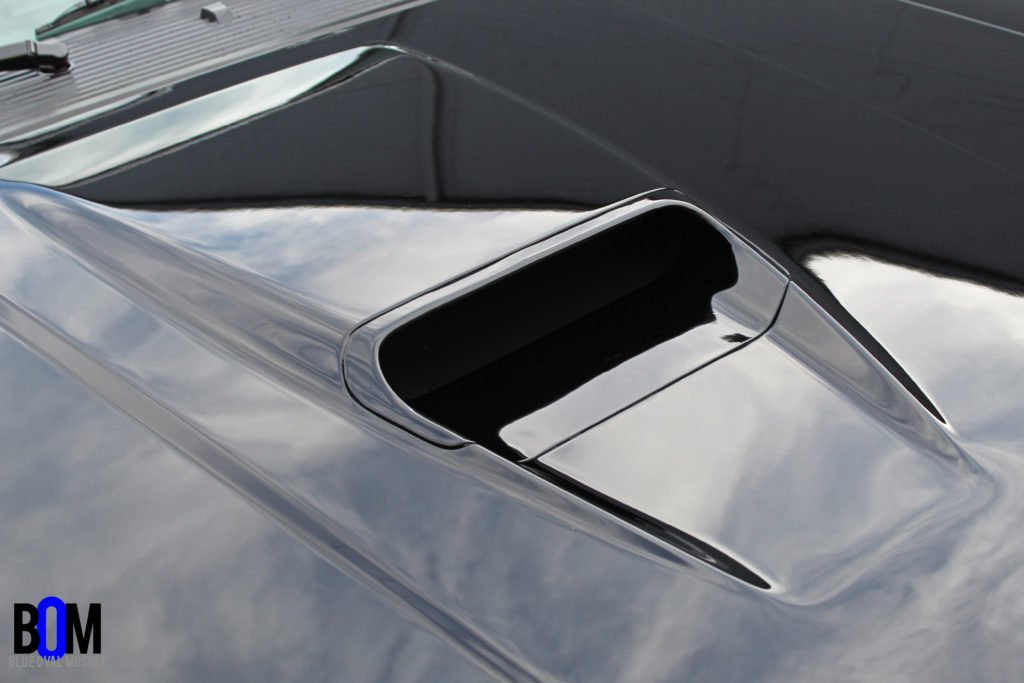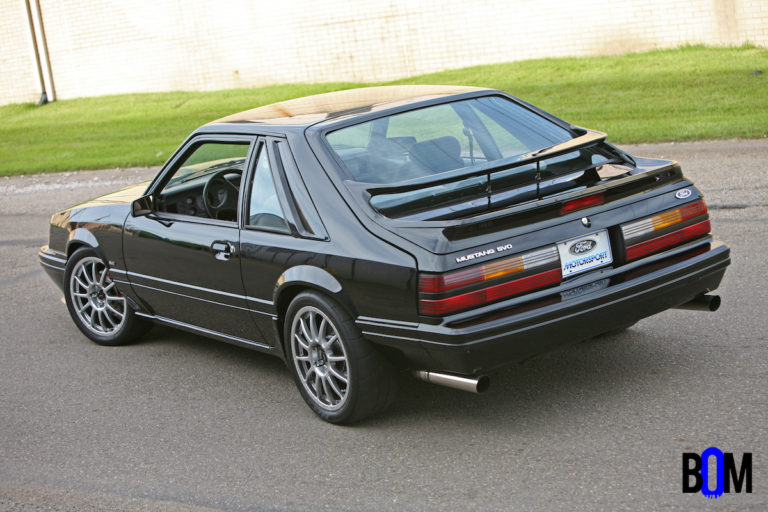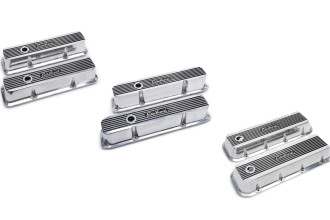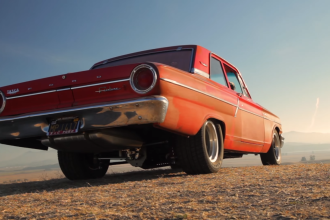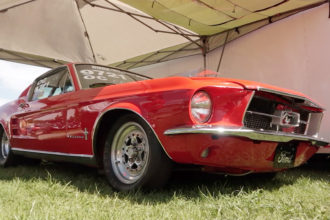photos by: the author
Jason Franklin’s 1986 SVO Mustang was Basically Left for Dead
Long before auto crossing and road racing was firmly planted into the mainstream of the automotive hobby, Ford wanted to tap into the segment early on. Looking for a way to promote their Special Vehicle Operations (SVO), as well as utilize their technology with electronic fuel injection and turbocharging — they created the Mustang SVO.
Built for the ’84-86 model years and packing an electronically fuel-injected 2.3L four-banger, it produced an impressive-for-the-time 175hp-205hp (depending on model year). While the ’84 and early ’85 cars utilized 175hp, some tuning, tweaking to the engine and ECU, as well as a switch to a water-cooled system earned the car another 30-35 horsepower during the later ’85 and ’86 model years.
The SVO was pricier, and held to a higher regard to its Mustang GT counterpart. Thanks to its smaller and lighter engine, as well as the engine mounting position, it handled far better than any other Mustang had up to that point and carried a lower curb weight than its 302-powered counterpart.
The one you’re looking at on this page isn’t a bone-stock example, however, and has not only received a cosmetic and mechanical restoration of sorts, but has been turned up to 11 thanks to its owner, Jason Franklin. Being a long-time Ford enthusiast and having owned a few other turbocharged Fords from the ’80s, and even a turbo 2.3L-powered ’70 Datsun 1200, it only made sense to pick one up and this one is certainly a standout among the rest.
Having been on the lookout for the right one since the early 2000s, he finally found “the one” in 2008 while at the Ford Nationals in Carlisle, PA. It was a broken down, beat to death project car that was acquired for a grand total sum of $1,000. Fast-forward ten years, and it’s not only in the condition you see it here, but it’s far, far better than it was when it left the factory some 22-years ago. Looking largely still stock on the outside, it was what was under the hood that stopped us in our tracks!
Still rocking the 2.3L Turbo engine it had left the factory with, albeit, with an extra cubic-inch, the engine has been given a new lease on life, thanks to a refurbished stock crankshaft, a set of JE pistons and Esslinger Racing connecting rods. Working our way towards the top end, Boport Stage 3 boost cams and a Boport Stage 3 port job on the stock head help the engine flow more efficiently, while creating additional power. A Melling high-flow oil pump inside a modified factory pan ensures that the rotating assembly remains lubricated.
Meanwhile, a custom aluminum 4-inch intake tube and manifold sit on top of the engine and a K&N filter keeps debris from flowing into the engine.
The ignition system has been upgraded with an MSD box, coil, Firecore wires and Ford Performance spark plugs, while 96-lb/hr. injectors, a Walbro 255/LPH. pump and an AccuFab adjustable regulator set at 35-psi. make sure the boosted 4-pot isn’t running too lean. Boport also provided the high-flow header, connected to 2.5-inch diameter tubing feeding through a set of Magnaflow mufflers.
Now the part that gets us excited the most, the turbocharger system. The stock unit was left on the shelf, and in its place, went a Turbonetics T-66 T3/T04S, paired with a TiAL 50mm blowoff valve and 44mm waste gate. A CX Racing 4-core intercooler, with 3-inch aluminum hot/cold side tubing not only helps keep the engine cool and air intake charge temperatures down, but help the turbo operate more efficiently, thus, creating more power. Jason hasn’t had the car on a chassis dyno yet, but thanks to some preliminary testing, he estimates that the output is somewhere in the 425hp/450lb-ft range, to the rear tires.
But you can’t more than double the horsepower to a car without taking other precautionary measures, and that’s what Jason has done. Backing the boosted 2.3L is a Pro 5.0-shifted BorgWarner T-5 gearbox, paired with a Spec Stage 3+ clutch and RAM billet steel flywheel. Power is sent through a Ford Racing aluminum driveshaft, back to a Ford 8.8 rearend that houses Moser 31-spline axles, 4.10 gears and a Detroit Locker. A Lakewood driveshaft loop prevents the driveshaft from going places it shouldn’t in the event of a mishap.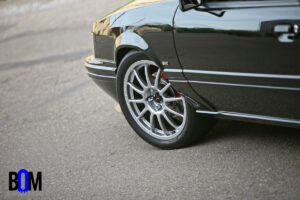
Jason, who’s also the owner of JTK Motorsports (more on that in a second), also handled the tuning himself, using an EMS Stinger standalone ECU to dial the car in. While your author hasn’t had any personal experience with the tuner or its software himself, Jason tells us that it’s quite simple to use. It allows him to adjust timing and other aspects of the engine calibration.
On the inside, the car still sports the factory charcoal grey cloth interior, Recaro seats, Ford Motorsport/SVO steering wheel and grey cloth on the face of the dash, which was all standard in the SVO Mustangs during the time. You’ll also catch a bevy of Auto Meter Phantom gauges in the dash if you pay attention.
Behind the driver’s side Recaro, is an emergency fire extinguisher, utilizing a bolt-in mount of his very own design. Available for many late-model Fords, including Fox Mustangs and others, JTK Motorsports extinguisher mounts utilize the same mounting locations of the two rear seat mounts — so there’s no cutting or welding needed.
Now, an SVO wouldn’t be an SVO if it couldn’t handle, and while the stock suspension hardware was rear from Ford, back in the ’80s, modern technology has long since surpassed the OEM components. So Jason took it upon himself to install SN95 Mustang upper and lower front control arms, UPR rear upper and lower control arms, a set of Steeda X2 ball joints and bump-steer kit, Eibach Sportline springs (front and rear), stock SVO sway bars and Strange adjustable struts/shocks to bring the car into 2018.
Putting the power and grip to the pavement, is handled by a set of 17×8-inch Team Dynamics wheels, wrapped in Nitto NT01 specc’ing in at 235/40/17 at all four corners — with cross-drilled, slotted brake rotors, SN95 calipers in the front and the stock SVO calipers out back handling braking duties.
Typically our story would end just about there, but there are a few more subtle details worth mentioning about Jason’s car, such as the vintage Ford Motorsports plate out back (Jason tells us is very hard to find), the front splitter or the four coats of flawless PPG black paint covering the entire car. However, if you look a little closer, you’ll see a set of adjustable rear spoiler shocks for the unique-to-the-SVO rear window spoiler. Along with the extinguisher most these are also of Jason’s design, and not only add a nice touch to the aesthetics, bit also provide a little bit of support for the potentially sag that comes with age on these cars.
After spending time wth Jason and his car in his native Canton, Ohio for our shoot, we come away wanting an SVO of our own more then ever. With enthusiasts like him, at least we know that these cars will be around for decades to come!
Tech Sheet:
- CAR: 1986 Mustang SVO
- OWNER: Jason Franklin
- ENGINE: 2.3L Turbo
- CYLINDER HEAD: Stock — Boport Stage 3, Esslinger roller rockers, Boport intake/exhaust valves
- CAMSHAFTS: Boport Stage 3+ (245/245 duration, .522/.522 lift, 112 LSA
- PISTONS: JE
- CONNECTING RODS: Esslingener billet
- CRANKSHAFT: Stock
- OILING: Melling pump, stock pan with custom baffles
- INDUCTION: K&N filter, AccuFab 80mm throttle body, 8-bar MAP, custom 4-inch aluminum tubing and intake manifold
- POWER ADDER: Turbonetics T-66 T3/T04S, TiAL 50mm blowoff valve and 44mm waste gate
- INTERCOOLER: CX Racing 4-core 3-inch aluminum hot/cold side tubing
- BOOST: 18-22psi.
- EXHAUST: Boport stainless steel header, Magnaflow mufflers with 2.5-inch diameter tubing
- IGNITION: MSD 6AL ignition box and coli, Firecore wires and Ford Motorsport plugs
- FUEL DELIVERY: 96-lb/hr. injectors, Walbro 255/LPH. pump, AccuFab adjustable regulator set at 35-psi.
- TUNING: EMS Stinger standalone ECU, tuned by owner
- TRANSMISSION: BorgWarner T-5, Pro 5.0 shifter
- CLUTCH: Spec Stage 3+, RAM billet steel flywheel
- DRIVESHAFT: Ford Racing aluminum, Lakewood safety lop
- REAREND: Ford 8.8 rear with 4.10 gears, Moser 31-splne axles, Detroit Locker
- SUSPENSION: SN95 upper and lower front control arms, UPR rear upper and lower control arms, Steeda X2 ball joints and bump-steer kit, Eibach Sportline springs (front and rear), stock SVO sway bars, Strange adjustable struts/shocks
- CHASSIS MODS: UPR weld-on subframe connectors, urethane bushings used throughout the car
- BRAKES: SN95 2-piston calipers (front), stock SVO calipers (rear), Maximum Motorsports stainless braided hoses, and cross-drilled/slotted calipers (front and rear)
- WHEELS: Team Dynamics 17×8 (front and rear)
- TIRES: Nitto NT01 235/40/17 (front and rear)
- Horsepower/Torque: 425/450
- 1/4-Mile E.T.: N/A

Rick Seitz is the owner and founder of AutoCentric Media, the parent company to Timeless Muscle Magazine, and has a true love and passion for all vehicles. When he isn’t tuning, testing, or competing with the magazine’s current crop of project vehicles, he’s busy tinkering and planning the next round modifications for his own cars.






